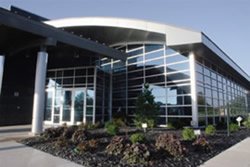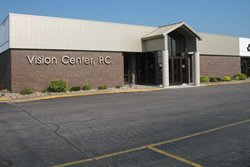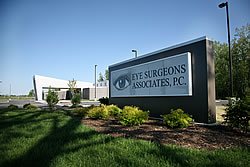What are common problems that need eyelid reconstruction?
Skin cancer is the most common problem requiring eyelid reconstruction. Our skin is constantly exposed to sun, which is one of the risks for skin cancers such as basal cell carcinoma and squamous cell carcinoma. These skin cancers generally require surgery to remove when they are or around the eyelids. Sometimes, these cancers can have multiple roots, spreading out into the eyelid like tiny fingers going in different directions. Because these cancers can have roots, special techniques are often used to remove them.
What technique is commonly used to remove skin cancers on the eyelids?
A common technique is Mohs micrographic excision. Mohs micrographic excision is a special type of surgery designed to remove a skin cancer while sparing as much normal skin and tissue as possible. Mohs micrographic surgery traces down any roots a skin cancer may have, targeting areas where skin cancer is found by looking under a microscope.
Mohs micrographic surgery is performed by a highly-trained dermatologist. This specialist will remove the skin cancer and some of the tissue around it. They will then examine the tissue with a microscope. If they see any areas of cancer under the microsope, they can then remove more tissue in the areas where the cancer was, while sparing neighboring normal tissue. They may repeat this process several times, removing tissue and checking under the microscope to make certain they remove all of the cancer.
If my surgeon recommends Moh’s surgery, why might I need to see two surgeons?
Mohs surgeons are highly trained skin surgeons, using the Mohs technique to remove skin cancers. These surgeons often reconstruct the area where they removed the skin cancer. In the case of eyelids, they may prefer to remove the cancer and have an ophthalmic plastic and reconstructive surgeon reconstruct the eyelid. Ophthalmic plastic and reconstructive surgeons are highly trained in eyelid surgery and are comfortable working on the eyelid and around they eye. They are comfortable repairing the eyelids and its delicate structures, but they are not trained to do Mohs surgery. A Mohs surgeon and an ophthalmic plastic and reconstructive surgeon make a great team: one with expertise removing a cancer and sparing healthy tissue – and the other with expertise in eyelid reconstruction.
What can I expect the day of surgery?
You will have Moh’s surgery first to remove the cancer, either the day before or the same day as you have reconstructive surgery. Your Mohs surgeon is a good source of information on what to expect for skin cancer removal.
For reconstruction and repair of your eyelid, every patient is different because every skin cancer is unique. You can plan on going home after surgery, because reconstructive surgery is typically an outpatient, or day surgery.
Surgery to reconstruct an eyelid is commonly done in an ambulatory surgery center. Dr. Repp will work with you to customize a plan to help keep you comfortable during surgery. Most patients receive medication to help maintain general comfort during the procedure (IV sedation). They will also get medication to anesthetize the eyelids.
After surgery, most patients will return home the same day for recovery.
Why isn’t the Moh’s surgery and the reconstructive surgery done at the same place?
Mohs micrographic surgery and eyelid reconstruction both require specialized equipment and techniques. Typically, most surgical centers don’t have the equipment for Moh’s surgery and most offices performing Moh’s surgery don’t have what is needed for eyelid reconstruction. The benefits of Mohs surgery are worth the downsides of going to two places – it offers an outstanding chance of removing your skin cancer. Your ophthalmic and plastic reconstructive surgeon brings knowledge and years of training to your reconstruction.
What about recovery and aftercare?
Each patient is unique, so Dr. Repp will customize an after-care plan for you, but some general guidelines follow. Ask Dr. Repp if these apply to you before following any of the recommendations on this site. And if something does not seem right, do not hesitate to call Dr. Repp.
Most patients will use frequent cool compresses for the first two days after surgery. During this time, the surgeon will likely ask you to limit activity, commonly recommending that you avoid any heavy lifting or bending. These activities can stress your surgery site and set back your healing. Following surgery, most patients experience only mild-to-moderate discomfort that can often be effectively treated at home with medications recommended by Dr. Repp. If you experience more than mild pain or discomfort, you should call Dr. Repp immediately for recommendations. Many patients wonder when they can safely return to work or other normal activities. There is no single answer for every patient, so ask Dr. Repp for details. Lastly, Dr. Repp may place sutures during your surgery. Typically, these are removed between one-to-two weeks following surgery. Ask Dr. Repp for details.




